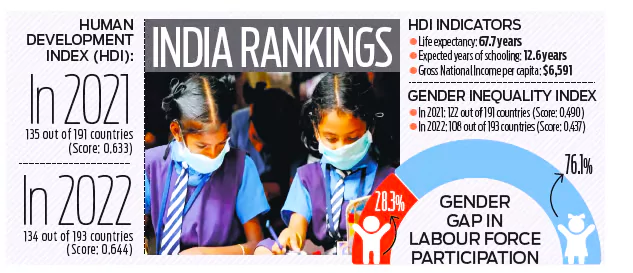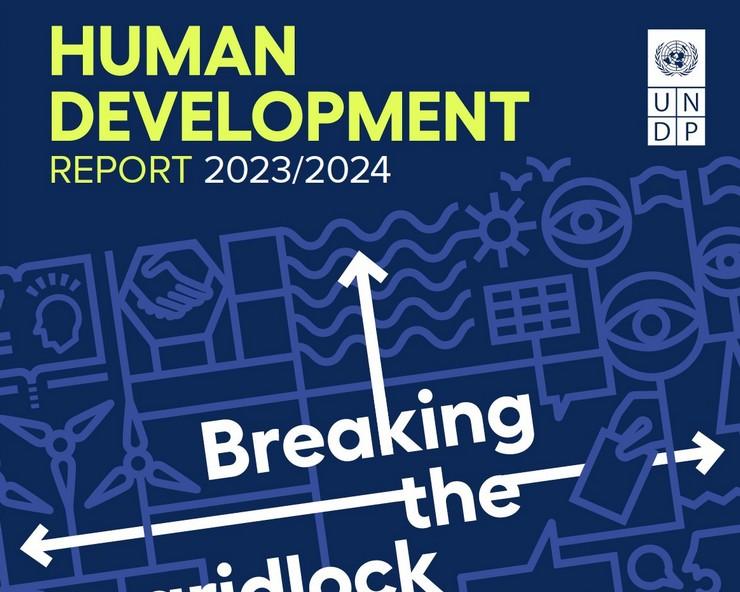According to the Human Development Report 2023–24, the nation is classified as having a medium level of human development with a 2022 HDI value of 0.644. In comparison to 1990, when the HDI was 0.434, it represents a notable increase of 48.4%.
India’s most recent Gender Inequality Index score of 0.437 is also noteworthy; it exceeds both the South Asian and worldwide averages of 0.478 and 0.462, respectively. Other progressive indicators include increases in income, education, and life expectancy.

Source: Only IAS
Since 1990, the average life expectancy at birth has increased by 9.1 years, while the mean number of years spent in school has increased by 3.8 years. However, not everything is as it seems. There are still issues to deal with, most notably the gender disparity in the labour force participation rate, which has women at 28.3% and males at 75.1%.
The worldwide human development scene is still tainted by inequality. The socioeconomic gap widens as wealthy countries prosper and many impoverished countries face hardships. These disparities have grown as a result of the Covid-19 pandemic, which has halted world development and left large swaths of the population behind.
Source: Newsx Live
The international community must step up its efforts to achieve the Sustainable Development Goals immediately. Notable is the HDI report’s recommendation to prioritise “planetary public goods” for climatic stability and digital fairness in order to overcome the difficulties.
It is essential to make investments in sustainability and increase access to technology in order to reduce climate change and close the digital gap. This is a call to action for policymakers and stakeholders to work together to create a more just and resilient society. India is a ray of light in a world growing more divided by its leadership in establishing the global development agenda.
What do you think about this? Comment below.

